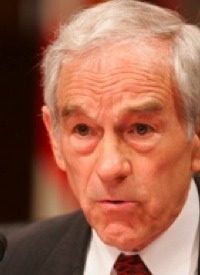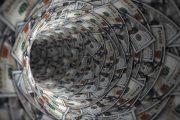
The times, they are a-changin’. Unthinkable only a year or two ago, the prospect that Congressman Ron Paul may actually receive the long-deserved chairmanship of a House subcommittee grows brighter by the day. And Paul’s longtime nemesis, Federal Reserve Chairman Ben Bernanke, may soon find his chief congressional detractor in a position to do a good deal more than mere finger-wagging.
By all accounts, the congressman from Texas, who, as expected, handily won re-election earlier this month, is in line to chair the House Domestic Monetary Policy and Technology subcommittee. In recent years, the subcommittee has, in Dr. Paul’s words, “basically been a committee that deals with commemorative coins,” its members too cowed by the majesty of the Fed to actually contemplate delving into serious monetary reforms. But if Dr. Paul is permitted by House party leadership to ascend to the chairmanship, there is little doubt that he will soon be using his new platform to push for more transparency at the Fed, more congressional oversight of the central bank, and a phased-in return to the gold standard. (Given the ferocity of the Tea Party insurgency, it is hard, although not impossible, to imagine that they would risk alienating the movement by dissing its founding father.)
Although this last prospect will doubtless make Keynesians like Bernanke recoil in disgust, a nouveau gold standard is no longer a pie-in-the-sky notion. The recent actions of the Federal Reserve — recklessly printing trillions of new dollars and driving the dollar to all-time lows against gold — are prompting many of the powerful at home and abroad to rethink the role of gold. No less august a personage than former Fed Chairman Alan Greenspan (who in his economic youth was a disciple of Ayn Rand and a “gold bug” besides) told the Council on Foreign Relations in New York City only a few weeks back that “fiat money has no place to go but gold.” Robert Zoellick, the President of the World Bank, has issued calls for gold to play some role in the international monetary system.
Of course, what elites such as these have in mind is nothing like the genuine gold standard employed by Western nations (including the United States) before World War I. Then, citizens in many nations could redeem currencies directly in gold (and sometimes in silver). This state of affairs imposed fiscal discipline on governments, discipline that was abandoned with the outbreak of World War I and the printing of massive amounts of unbacked pounds, francs, lire, marks, and other currencies, to fund the war. After the war, the “gold standard” which England and the other bankrupt former belligerents observed was no gold standard at all but a gold exchange standard in which only governments and international bankers could actually redeem currencies in gold.
The United States remained on a full gold standard until the Great Depression, and after World War II put in place an international gold exchange standard while denying ordinary citizens the right even to own gold. But even the American gold exchange standard was abandoned in 1971, when then-President Nixon closed the so-called “gold window.”
What is probably being contemplated now is a global currency tied to a gold exchange standard of some kind — convenient for the banksters but irrelevant to the little man worldwide.
Having a man like Ron Paul in a position to actually have some leverage over the Federal Reserve may be a crucial development in coming months, as the global currency crisis grows more acute. Expect Dr. Paul to work to reform and eventually phase out the Fed altogether, while continuing to urge Americans to consider returning to the true gold standard of yesteryear — the only check against inflation and deficit spending that ever made a difference.
Photo of Ron Paul: AP Images



